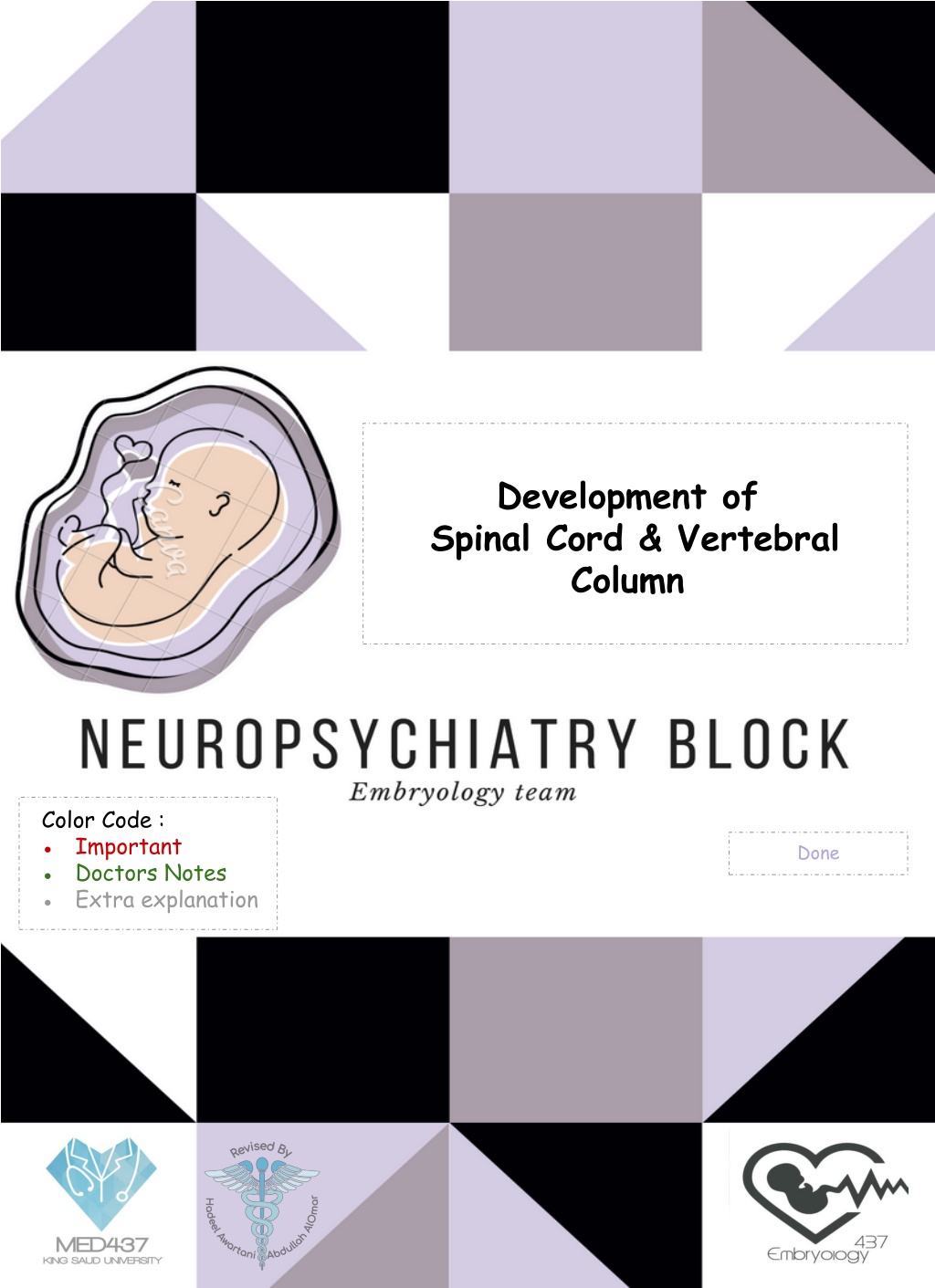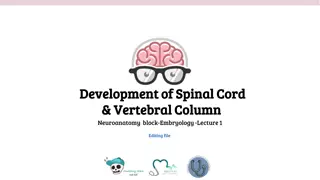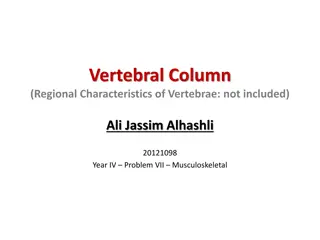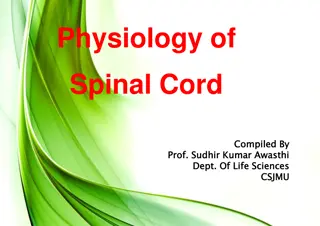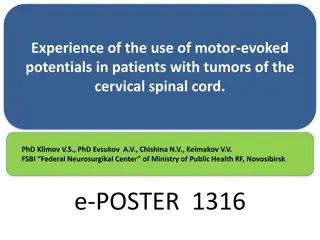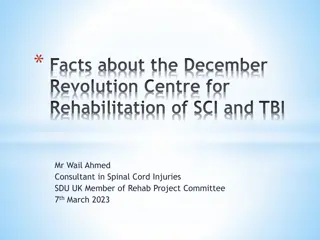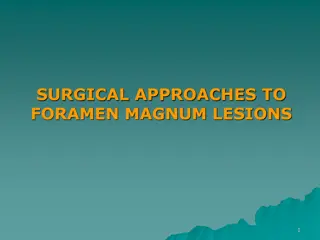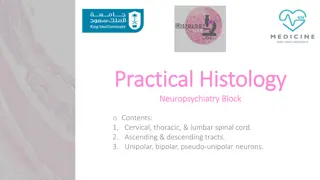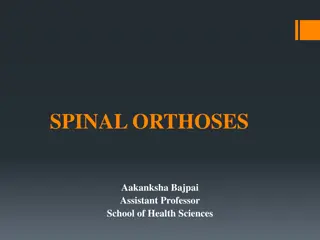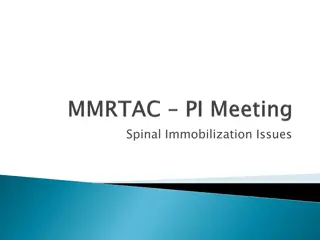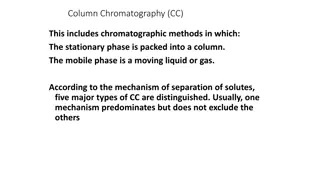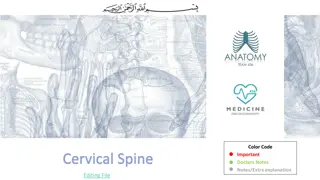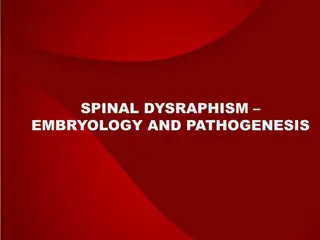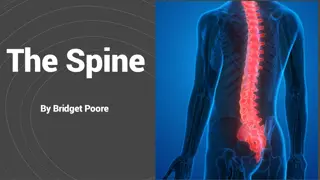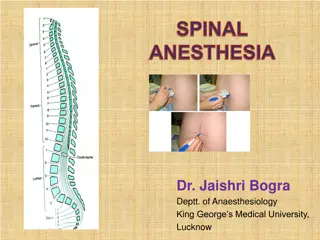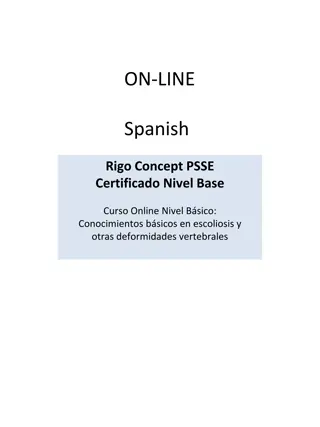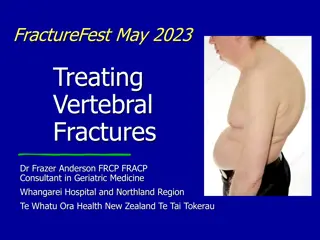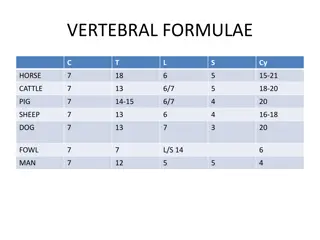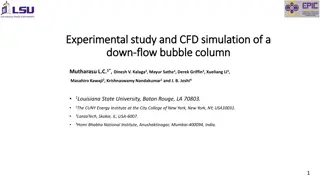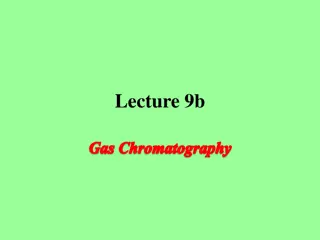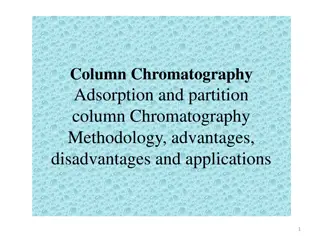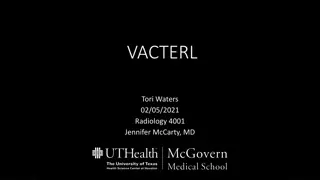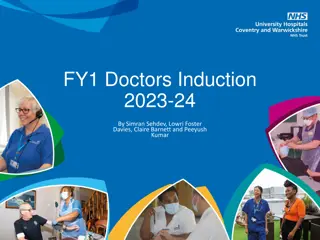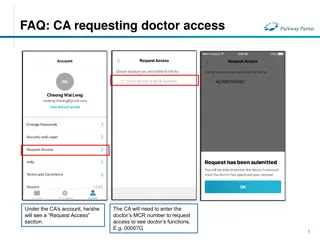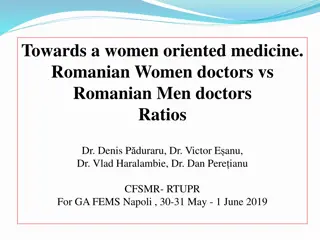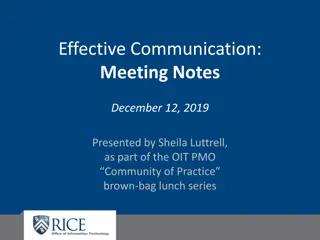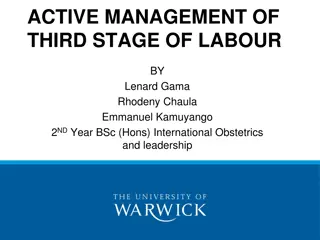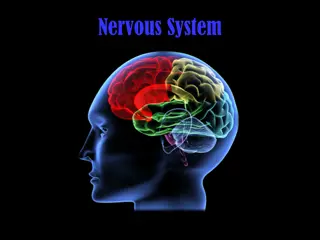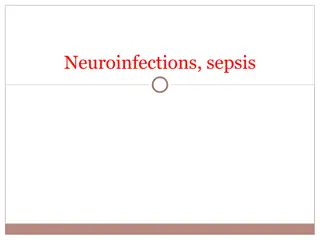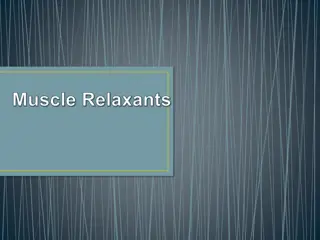Development of Spinal Cord and Vertebral Column - Doctors' Notes
The development of the spinal cord from the neural tube, layers of the spinal cord, subdivisions of mantle and marginal zones, meningeal layers, vertebral column development, chondrification, ossification stages, spina bifida types, and positional changes of the spinal cord are crucial aspects covered in this informative document.
Download Presentation

Please find below an Image/Link to download the presentation.
The content on the website is provided AS IS for your information and personal use only. It may not be sold, licensed, or shared on other websites without obtaining consent from the author. Download presentation by click this link. If you encounter any issues during the download, it is possible that the publisher has removed the file from their server.
E N D
Presentation Transcript
Development of Spinal Cord & Vertebral Column Color Code : Important Doctors Notes Extra explanation Done
OBJECTIVES : Describe the development of the spinal cord from the neural tube. List the layers of the spinal cord and its contents. List subdivisions of mantle & marginal zones. List meningeal layers and describe positional changes of spinal cord. Describe development of vertebral column from sclerotomic portion of paraxial mesoderm. Describe chondrification & ossification stages in vertebral development. Describe spina bifida and its types.
The Three Germ Layers : Ectoderm, Mesoderm, Endoderm The Neural Tube is a derivative of the ectoderm . Notochord stimulates neural tube formation which in turn stimulates development of the vertebral column . development Neural tube gives rise to Spinal Cord and Brain Notochord acts as an axis which will be formed around it the Vertebral column. It helps in vertebral column Development of Neural Tube : 1. 2. 3. Ectodermal cells dorsal A longitudinal groove, neural groove, develops in the neural plate. The margins of the neural plate (neural folds ot esuf dna rehto hcae ot hcaorppa ) eht mrof ebut laruen . neural neural groove neural fold neural tube . eht mrof ot nekciht drohcoton ot etalp laruen ectoderm neural plate neural groove notochord plate Development of the Spinal Cord: brain The spinal cord develops from the caudal 2/3 of the neural tube . The cells of the neural tube are arranged in three layers : ventricular zone mantle zone marginal zone Inner Middle Outer undifferentiated cells cell bodies of neurons (future grey matter) nerve fibers or axons of neurons (future white matter) White matter . ) ) ( ( neural tube Grey matter ) ( : grey matter Dorsal alar plate ) Dorsal horn Ventral basal plate ) Ventral horn ( ( - 1 2 - Mantle Layer of Spinal Cord : Neurons of mantle layer (future grey matter otni etaitnereffid ) : Dorsal alaretalp Ventral basaletalp future dorsal horn future ventral horn containing sensory neurons containing motor neurons The 2 areas are separated by a longitudinal groove (sulcus limitans) .
Ventral basal plate Dorsal alar plate Proliferation and bulging of both alar & basal ni tluser setalp : Formation of dorsal median septum . Formation of ventral median fissure . Narrowing of the lumen of the neural tube to form a small central canal . The marginal layer (future white matter ) : increases in size due to addition of ascending, descending & intersegmental nerve fibers and it is divided into : dorsal ,lateral dna ventral funiculi (white column) Myelination ta strats srebif evren fo 4 Motor fibers myelinate before evah snoxa yrosnes dna rotom htob ,yrujni evren a retfA ,oS .srebif yrosnes yawhtap reporp a nevig ,dna etareneger ot ytiliba eht . Motor fibers myelination is faster than sensory fibers th month & continues during the 1st postnatal year . Meninges : These Are 3 Membranes covering the neural tube: Outer thick duraretam Middle arachnoidretam Inner thin piaretam MESODERMAL in origin ECTODERMAL in origin A cavity appears between the arachnoid eht & pia )FSC) diulf lanipsorberec htiw dellif semoceb ) ecaps dionhcarabus ) retam .. spinal cord spinal cord Positional Changes of Spinal Cord : 1. 2. Initially, the spinal cord occupies the whole length of the vertebral canal. As a result a faster growth of vertebral column, level rehgih a ot yllaudarg stfihs ) siralludem sunoc ) droc lanips fo dne laduac eht Prenatal periods is consistent of two periods : 1 - embryonic period: since fertilization to the end of 8th week 2 - fetal period: beginning of 9th week to birth End of embryonic period: Spinal cord at the end of vertebral column Shift upward: Spinal cord at S1 Spinal cord at L3 Spinal cord at L 1 - L 2
Development of the Vertebral Column : The vertebral column develops from the ventromedial parts (sclerotomes) of the somites . The somites develop from the para-axial mesoderm. notochord . para-axial mesoderm : Sclerotome mesoderm Sclerotome, Dermatome, Myotome Intraembryonic Mesoderm : .. Located between Ectoderm & Endoderm EXCEPT in the central axis of embryo where NOTOCHORD is found. Differentiates into 3 parts: 1. Paraxial mesoderm 2. Intermediate mesoderm 3. Lateral mesoderm Paraxial mesoderm dellac stnemges otni sedivid Each somite divides into 3 parts: 1. Dermatome 2. Myotome 3. Sclerotome Future bones somites . Future skin Future muscles DEVELOPMENT OF VERTEBRA : Sclerotome around neural tube: forms vertebral (neural) arch . Sclerotome around notochord: forms body of vertebra. Sclerotome in body wall near to neural tube and notochord: forms costal process ( gives ribs in thoracic region only ) . 1. 2. 3. Formation of Body of Vertebra: At 4th week, each sclerotome becomes subdivided into two parts: an cranial part fo gnitsisnoc ,loosely arranged cells . a caudal part erom fo ,condensed tissue. The Caudal Part Of each somite fuses with the cranial part of the consecutive somite , around the notochord to form the body of the vertebra, called the centrum. Thus each centrum develops from 2 adjacent sclerotomes .
Fate of Notochord : In the region of the bodies of vertebrae: It degenerates Between bodies of vertebrae: It forms the central part, nucleus pulposus of the intervertebral discs . Annulus fibrosus part of the intervertebral discs is formed by the mesoderm surrounding the notochord. The fused sclerotomes grow dorsally around the neural tube and form the vertebral (neural) arch. Ventrolaterally, costal processes develop that give rise to ribs in thoracic region . Nucleus pulposus developed from the remnants of notochord Annulus fibrosus developed from mesoderm surrounding the notochord Vertebral Development : This picture represents the changes that occurs into 2 stages : chondrification stage and ossification stage. -The chondrification centers appears at 6th week (cartilage))B.ciP): embryonic period -And by the fo dne eht ta( 8 ossification centers appears (bone))c.ciP) : th week) the 3 primary Primary Ossification Stage Mesenchymal Stage Chondrification Stage -And The 5 secondary ossification centers appear at puberty. Fusion of bony halves of vertebral arch occurs at (pic.D). and Fusion of centrum with vertebral arch occurs at 4 6years )D.cip) . All centers unite around 25 years. SO, Ossification starts at the end of embryonic period ( end of 8th week) and ends at adult age 25 years. 5 - 3 years - Dr.sanaa Notes ( 435 team ) Stage of fusion Stage of Secondary Ossification Curvatures of Vertebral Column : Primary curvatures )roiretna evacnoc) : Secondary curvatures: (convex anterior) develop prenatally develop postnatally 1 . Thoracic 1 . Cervical: as result of lifting the head Lumbar: as a result of walking a 2 . Pelvic or Sacral 2 . Vertebral column is concave anterior during the prenatal period The it convex in 2 areas Cervical - as results when baby is lifting his head Thoracic - as result when the baby walks
Spina Bifida Cause: Failure of fusion of the halves of vertebral arches Incidence: 0.04 - 0.15 % Sex: more frequent in females Meningo = meninges myelo = spinal cord ocoele = sac contains fluid or cysist schisis= opening Types: 1 . Spina bifida occulta Better prognosis ) 20% ) 2 . Spina bifida cystica ) 80% ) The closed type Only one vertebra is affected No clinical symptoms Skin overlying it is intact. Sometimes covered by a tuft of hair. Usually Doesn't Involve underlying neural tissue. The open type Cystica is the most severe and complex form of spina bifida. It usually involves serious or fatal neurological problems. A portion of the nerves and the spinal cord are exposed outside the body Neurological symptoms are present 1. 2. 3. Subdivided into: Spina bifida with meningocoele Spina bifida with meningomyelocoele Spina bifida with myeloschisis 1 . Spina bifida with 2 . Spina bifida with meningomyelocoele 3 . Spina bifida with meningocoele myeloschisis protrusion of sac containing meninges and cerebrospinal protrusion of sac containing meninges with spinal cord and/or nerve roots. spinal cord is open due to failure of fusion of neural folds. fluid. Failure in development of neural tube and neural fold Meninges and CSF Meninges and spinal cord
Summary Structure Origin Neural tube Ectoderm Spinal cord Caudal 3 \ 2 of the neural tube. Grey matter Mantle layer. White matter Marginal layer. arachnoid mater and pia mater Ectoderm Dura matter mesoderm Vertebral column ventromedial parts (sclerotomes)of the somites. Somaits Para-axial mesoderm. nucleus pulposus Notochord between the bodies of vertebrae. Annulus fibrosus Mesoderm Time Changes 3rd week (early) Three germ cell layers 4th week Each sclerotome becomes subdivided into cranial and caudal part. 6th week Chondrification centers appear. End of 8th week 3primary ossification centers appear. 4th month Starting of myelination of nerve fibers. During 1st postnatal year Continuation of the myelination of nerve fibers. 5 - 3 years Fusion occurs (fusion of 2 vertebral arches) 6 - 4 years Fusion of centrum with vertebral arch. At puberty 5secondary ossification centers appear. 25years All centers unite. During development the end of spinal cord shifts its position: at (level of S tluda ,) L fo level) htrib ta ,) 3 1 ) . L fo level) noitisop 1 - L 2
Questions 1. spina bifida with ............. Is a protrusion of sac containing meninges with spinal cord: . Mantle zone is a future ........... and marginal is zone is a future. ........... 2 Spina Bifida Occulta Grey Matter white matter B . Spina bifida with meningomyelocoele Central canal grey matter B . C . Spina bifida with meningocele White matter grey matter C . D . Spina bifida with myeloschisis D. White Matter central canal - 16 contains cell bodies of sensory neurons? . 3 Which one of the following regions of spinal cord . As a result of fast growth of vertebral column, which part of spinal cord shifts gradually up ? 4 Alar plate Cauda Equina B. Ventricular zone Conus Medullaris B . C . Basal plate Clarke's column C . D . Dorsal funiculus D . Central canal . The dorsal alar plate and ventral basal plate are separated by: 5 . which one of the following periods of life fusion between vertebral arch & body of vertebra occurs? 6 Marginal layer 8 th week B . Ventricular layer Puberty B . C . Sulcus limitans 6 - 4 years C . D . Ventral Media Fissure Around 25 Years D . - 14 statements is correct? . 7 Regarding spina bifida which one of the following . Myelination of nerve fibers continues after birth during: 8 The Closed Type Is More Frequent Than The Open type First 2 Months B . The closed type presents with clinical symptoms. 1 First 4 Months B . Q 2 3 4 5 6 7 8 C . Answers Spina bifida is due to failure of fusion between the halves of vertebral arch. B A First 8 Months C C . A B C C D D . In cases of spina bifida with meningocoele, the spinal cord is open. First 12 Months D .
) ( Team leaders - Team members - - - - Embryologyteam moc.liamg@ 437 @embryology437 Your feedback Editing file
